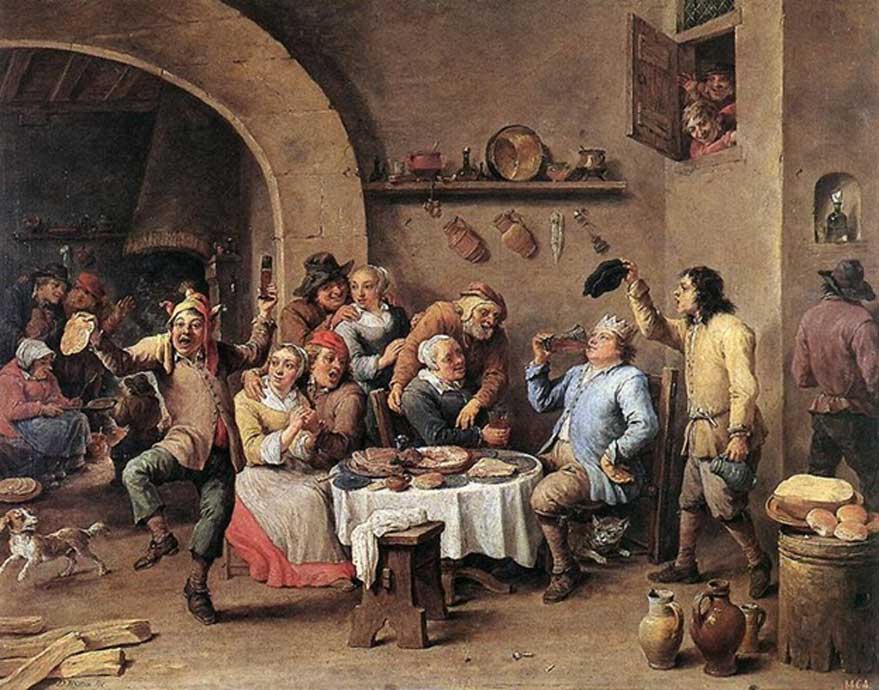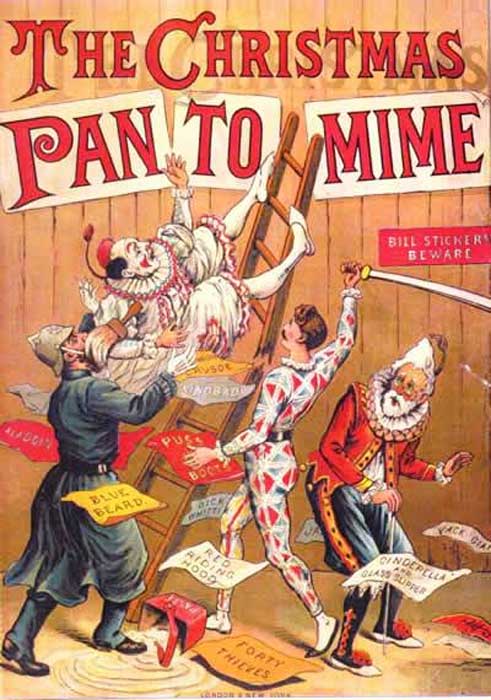
Skeletons in the Attic and Babes in the Wood: Surprising and Spooky Yuletide Traditions
Although we nowadays associate ‘Happy Holidays’ with celebrations during Advent and the run-up to Christmas Day and then on to New Year’s Eve (or Hogmanay in Scotland) not that many years ago the ‘Festive Season’ extended beyond the end of December until at least Twelfth Night (5th January), while in the 19th century it was the convention to display Christmas decorations until Candlemas (2nd February, coincidentally Groundhog Day in the United States).
When I was a child growing up in the North of England in the 1950’s, Twelfth Night was an occasion for a large gathering of friends and family at which guests would entertain the party by performing songs, giving recitals, and telling ghost stories—the spookier the better.

Twelfth-night (The King Drinks) circa 1634. (Public Domain)
Even today the tradition of the longer festive period is still kept alive in the UK by the pantomime (panto) season which runs until at least mid-January.

The Christmas Pantomime color lithograph bookcover, 1890, showing the harlequinade characters. (Public Domain)
I was therefore intrigued, during the course of researching material for my upcoming book on East Anglian legends and folklore, to discover that two tales associated with the longer Yuletide tradition had their historical origins in my part of Norfolk (England).
The Skeleton in the Attic
Lying on the north bank of the River Waveney in south Norfolk is the village of Brockdish. Today, one of the many old and intriguing buildings in the village is Brockdish Hall, which was built in 1634 in an Elizabethan style. This “newer” building stands next to the moated site of the now long-demolished Brockdish Old Hall – and it is the legend associated with the original hall that is the focus of our attention, for this is one of the locations for the story of ‘The Mistletoe Bride.’
According to the legend (and this was a story I first heard as a child at a long-ago family Twelfth Night party) it was the Christmas season, the Old Hall was decorated with boughs of mistletoe and holly, and a party was taking place to celebrate the marriage of the lord of the manor’s beautiful daughter. At some point during the evening, the bride grew tired of dancing and suggested the guests play hide-and-seek. Knowing the house so well, the bride headed off to an attic room and hid herself in a large wooden storage chest.




